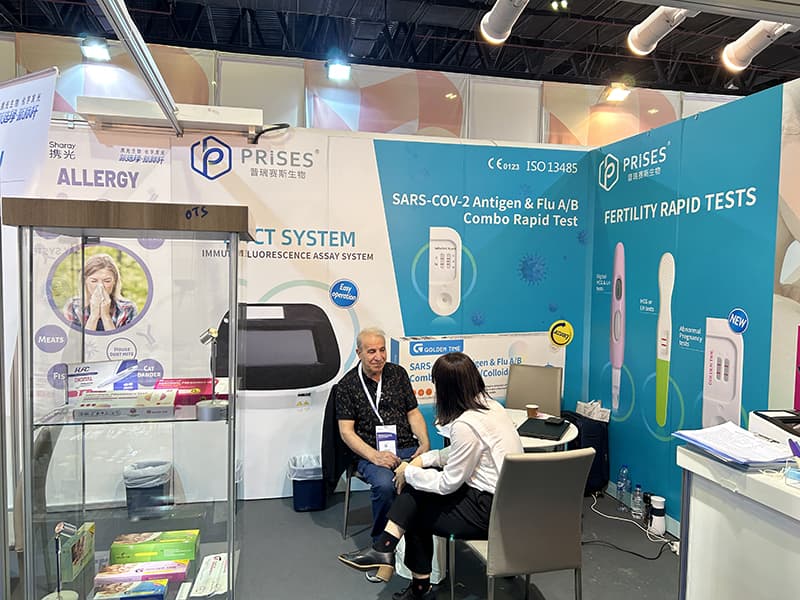डिस . 21, 2024 06:58 Back to list
test ovulation
Understanding the Importance of Ovulation Testing
Ovulation is a critical phase in the female reproductive cycle, playing a significant role in conception. For couples trying to conceive, understanding when ovulation occurs can increase their chances of success. Test ovulation is a practice that many women engage in to track their ovulation cycles, gain insights into their fertility, and make informed decisions about family planning. In this article, we will explore what ovulation testing entails, the methods available, and how it can assist women in their reproductive journeys.
What is Ovulation?
Ovulation is the process by which an ovary releases an egg (ovum). This typically occurs once during each menstrual cycle, around the midpoint of the cycle. For example, in a standard 28-day cycle, ovulation usually happens around day 14. Understanding when ovulation occurs is essential because the window for conceiving is relatively short; the egg remains viable for about 12 to 24 hours after release. Hence, knowing the exact timing of ovulation can significantly enhance one’s chances of conception.
Methods of Ovulation Testing
1. Ovulation Predictor Kits (OPKs) These are widely used and available over-the-counter. OPKs work by detecting the surge in luteinizing hormone (LH) that occurs 24 to 36 hours before ovulation. By testing urine daily, women can pinpoint their fertile window with greater accuracy. When the test line is as dark as or darker than the control line, it indicates that ovulation is likely to occur soon.
2. Basal Body Temperature (BBT) Charting This method involves taking your temperature every morning before getting out of bed and charting it over time. A woman’s BBT slightly rises after ovulation due to increased progesterone levels. By recording and analyzing these temperature changes, individuals can identify their ovulation pattern over several cycles.
3. Cervical Mucus Monitoring The consistency and volume of cervical mucus change throughout the menstrual cycle. Around ovulation, cervical mucus becomes clearer, stretchier, and more abundant, resembling raw egg whites. By observing these changes, women can gauge their fertile period.
test ovulation

4. Fertility Apps In the digital age, numerous apps are available that help track cycles and predict ovulation based on data input, including cycle length, temperature, and symptoms. These apps can provide valuable insights and reminders for ovulation testing.
5. Medical Supervision For those facing infertility issues, consulting a healthcare provider can lead to more advanced testing methods such as blood tests to measure hormone levels or ultrasound monitoring to observe follicular development.
Benefits of Ovulation Testing
Engaging in ovulation testing offers several advantages. First and foremost, it empowers women with knowledge about their bodies. This understanding can alleviate anxiety related to conception and enhance communication between partners about family planning.
Moreover, regular ovulation testing can help identify irregular cycles or potential fertility problems, prompting individuals to seek medical advice sooner. For couples who have been trying to conceive for an extended period, these insights might lead to interventions that could assist in getting pregnant.
Finally, even for those not looking to conceive, understanding ovulation can provide insights into overall reproductive health. It can also assist in natural family planning methods, allowing women to avoid or achieve pregnancy based on their personal goals.
Conclusion
Test ovulation is an essential tool in family planning and reproductive health. By employing methods such as OPKs, BBT charting, and cervical mucus monitoring, women can accurately predict their ovulation and optimize their chances of conception. Furthermore, this knowledge promotes a deeper understanding of personal health and reproductive cycles. Whether you are trying to conceive or simply want to keep track of your reproductive health, understanding and testing for ovulation can play a pivotal role in your journey. Through increased awareness, women can take control of their fertility, thus making informed and confident choices regarding their reproductive lives.
-
Dengue NS1 Rapid Diagnostic Test Kit
NewsMar.07,2025
-
Dengue NS1 Rapid Diagnostic Test Kit
NewsMar.07,2025
-
Dengue NS1 Rapid Diagnostic Test Kit
NewsMar.07,2025
-
Transferrin Rapid Test Cassette Tumor Marker TF Card
NewsMar.07,2025
-
Malaria Pf Pan Rapid Diagnostic Test Kit
NewsMar.07,2025
-
malaria pf / pan ag rapid test
NewsMar.07,2025

